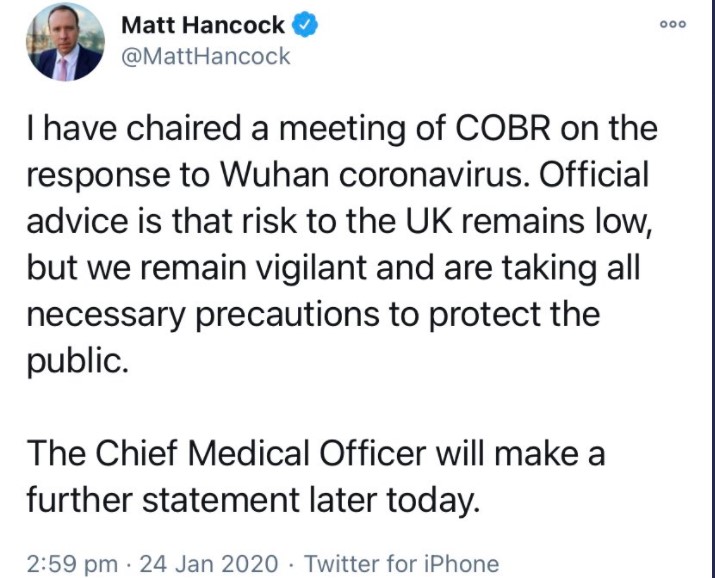CEO of Hope Projects in the West Midlands, and NACCOM Trustee, Phil Davis reflects below on the lessons learnt by one frontline charity as they continue to support people experiencing destitution at the hands of a hostile asylum system, whilst also trying to navigate a deadly pandemic.
[hr]
1 year ago this week…

I’m not going to take this as an opportunity to lambast the government on its public health response to Covid-19. Others are better placed than me to do so, instead will reflect on this year, how it has affected Hope and the people that we work with.
All health is public health
January was the month Covid started making an appearance in mainstream news stories. By February we were aware that something unusually bad was happening in Wuhan and that if it spread, this could be pretty serious. Nevertheless in February I was still writing about the danger of leaving people homeless in winter and not feeling the need to reference Covid because I was no more forsighted than most people. March was when we realised we had a public health crisis in the UK.
Hope projects works with homeless and destitute asylum seekers in the UK. People who are generally either street homeless or sofa surfing. This is clearly a risk to their health, but in a pandemic it becomes a risk to everyone. Hand hygiene is almost impossible on the street. Short term house to house sofa-surfing is almost a perfect way to rapidly spread infection. Lack of access to health care makes it unlikely that outbreaks will be noticed until it is far too late to contain them. Once infected self-isolation is impossible.
Hope Projects joined with many other charities, including NACCOM, Crisis and Asylum Matters to demand that all homeless people, including those destitute because they had no recourse to public funds (NRPF) should be housed, not just for the good of their health but for the good of everyone’s health. To my surprise the government agreed relatively swiftly and in late March the ‘Everyone In’ policy was swiftly implemented.
‘Everyone In’
From our point of view there were 2 critical changes that between them, probably, saved hundreds, perhaps thousands, of lives. Local Authorities were given permission and, to an extent, the resources, to provide housing and some degree of subsistence for anyone who was rough sleeping. Even those with no recourse to public funds. Secondly, a little later, the Home Office agreed to provide ‘section 4’ support to any homeless person who has gone through the asylum system. That’s an oversimplification but its pretty close to what happened in practice. The Home Office provision wasn’t really part of Everyone In, but they get lumped together.
2 quick observations. Firstly, it happened and it would be churlish to complain. Secondly, it proved that (oversimplifying again but…) it had been possible to end rough sleeping in a weekend if you really wanted to. Much of the rest of the year, in policy terms, has been devoted to not losing what we had gained, or at least delaying it a long as possible. You can read a bit more about it here.
Hope’s role
Like everyone we had to respond to an ever changing situation very swiftly. I’m proud of how we responded. You can read about the first month here. The advent of Everyone In, combined with the almost complete shutdown of Home Office decision making, meant that very few people were being made homeless by the asylum system. We took the decision to continue supporting the people we were already housing – it would be an added risk to ask them to move house to statutory provision – but when we or our partners became aware of anyone who was homeless we would refer them to the newly opened up statutory provision. Our focus was on supporting the people we already housed and providing legal advice for the many people in temporary accommodation so that when it ended, they were in a better, more informed position and had a plan of action.
Extension, evolution, dilution…
Everyone in and Section 4 were extended piecemeal. It always seemed that ‘in a months time, when this all blows over, it will be back to normal’. It never blew over and the policy was extended month by month. After a while local authorities stopped taking in ‘new’ homeless people with NRPF but continues to support and house the ones taken in in the initial intake of Everyone In. The Home Office, constrained by legal actions, continued to offer s4 support to people who were homeless but would not, in normal circumstances, be entitled to it. There is now a slightly bizarre situation where these people are all refused first time round but almost universally accepted on appeal. Because. Well I don’t know, but it happens so I’m sure there is a reason for it. The problem with this is that it can take weeks or even months to go from application to refusal to appeal to technical grant of support to actually getting a house to live in.
Hope Projects is now housing quite a few people who are just starting this journey so they have somewhere safe and warm to live while waiting for our partners at Refugee Action to force the Home Office through the hoops they have created. To create the spaces for these people, residents whose asylum claims have progressed enough to qualify for ‘normal’ Home Office support are being asked to move on. As always it’s a question of difficult balances.
Final reflection
Well, one year on and we are still far from out of the woods. What can I take from this? A whole mess of things but more than anything else? That we have learned that we can end homelessness and we are in real danger of deciding that we won’t.
[hr]
If you’d like to get in touch with Phil Davis, please click here.



